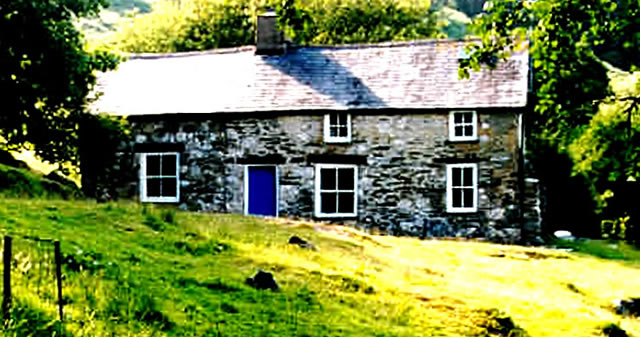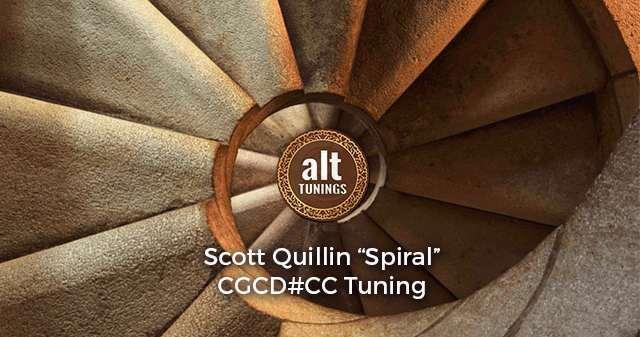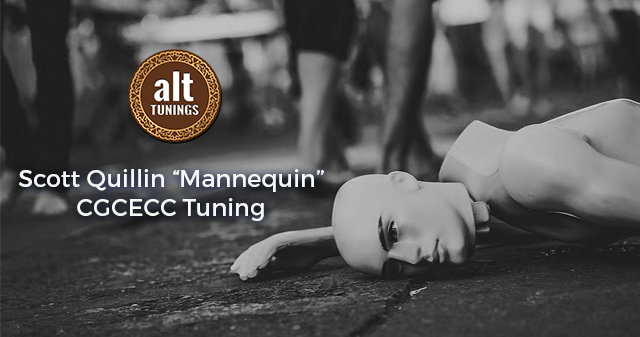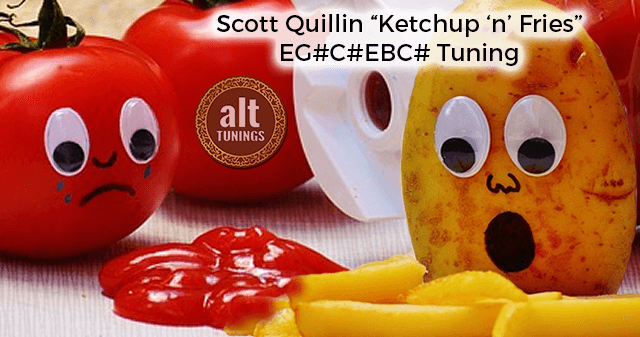So far this week, we’ve looked at the following alternate tunings:
Today’s alternate tuning is EA#C#EA#E in the key of B Bebop Dominant.
You can read about the Bebop Dominant scale later in this blog post.
The notes of our tuning (A#, C# and E) make up the chord A# dim (diminished triad) so we can call our tuning “A# dim open tuning”.
The song I play in the video below, “Golden Hill,” was written while I improvised today in A# dim open tuning in the B Bebop Dominant scale. The fretboards below the video show the scale notes, numbers, scale degrees and intervals that I’m playing in this interesting alternate tuning.

I came up with the name “Golden Hill” from the 18th-century cottage in Wales (called Bron-Yr-Aur) where Jimmy Page and Robert Plant of Led Zeppelin wrote and recorded some of their songs including “Bron-Yr-Aur,” “Friends,” “Gallows Pole,” “That’s The Way” and others from Led Zeppelin III. These songs, along with many others, were written in alternate tuning.
“Golden Hill” is influenced by Led Zeppelin’s song “That’s The Way” from Led Zeppelin III which also features “moving octaves” with drone notes. As you can see in the video and fretboard, I’m playing octave notes on strings 2 and 5 while the other strings ring open, creating a “drone” sound while the melody octaves moves up and down the scale.
So, what’s with the name Bebop Dominant?
David Baker, a world-renowned Jazz educator, came up with the name “Bebop Dominant” because it was so frequently used by jazz artists from the Bebop Era (primarily from the 1940’s – 1960’s).
Another way to look at today’s scale/key B Bebop Dominant is E Major with an added A# note.
Um, what?
The Major scale is a 7-note scale. The notes of the E Major scale are:
E, F#, G#, A, B, C#, D#
The Bebop Dominant scale is an 8-note scale. The notes of the B Bebop Dominant scale are:
B, C#, D#, E, F#, G#, A, A#
If we compare these two scales, only the A# note in B Bebop Dominant is missing from the E Major scale.
Because today’s alternate tuning is E, A#, C#, E, A#, E, we can either look at our scale as E Major with an accidental or “borrowed” note A#, or we can call it B Bebop Dominant which includes the A# note in the scale.
The notes of our tuning (A#, C# and E) make up the notes of the A# dim (a diminished triad) chord which is in the B Bebop Dominant scale but only in E Major when we add the note A# to the scale.
Our tuning can be called A# dim Open Tuning!
MUSIC THEORY BLURB
While I’m playing in the scale/key of B Bebop Dominant, I’m focusing on the E note, not B, which means I’m playing the 4th mode of B Bebop Dominant (or focusing on the E mode of B Bebop Dominant).
NOTE: You don’t need to know or understand all this technical/theory stuff to enjoy playing in B Bebop Dominant or writing songs using this tuning and scale. I don’t know what I’m playing while I’m improvising. It’s only after I go back and analyze what I’ve played that I begin to understand the theory behind it.
My approach to songwriting is nearly all experimental and improvisation. I don’t know WHAT I’m playing while I’m playing it, especially while playing in alternate tuning. But when I spend the time to understand the scale and chords I’m playing, I can take the chord progression in many different directions while creating a fresh, unique sound using alternate tunings.
May these daily alt tunings continue to inspire you as you explore songwriting beyond the limitations of standard tuning. If you’d like to learn more about making alt tuning a part of your songwriting, give me a call at 888-7-GUITAR or reach out to me here.
Until next time…
~Scott Quillin
Did you know? Scott started playing guitar when he was 14 years old back in 1982. A Pittsburgh native, Scott resides in Rhode Island where he teaches guitar, bass, music and songwriting. He also records and mixes songs for local bands and artists as well as his own music. He writes and records nearly every day and has a real passion to help others hear their “inner voice” and express that in songs.
You can listen to more of Scott’s music at https://soundcloud.com/scottquillin.












